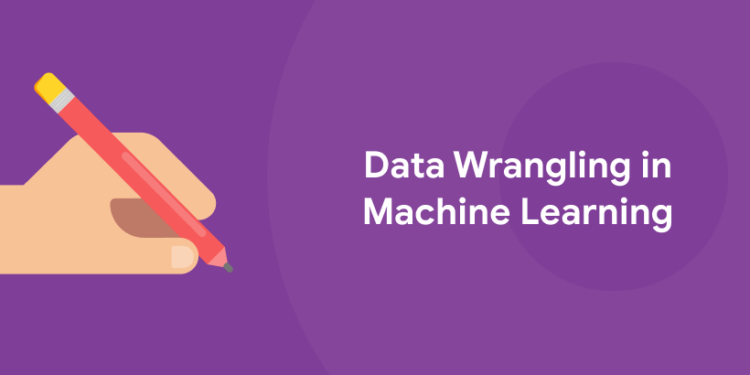Table of Contents
As the world of data expands rapidly, it becomes increasingly important to organize the right data for analysis. Business users rely on data and information for nearly every business decision. Therefore, it is important to have raw data available for analysis. Data wrangling in machine learning is the process of transforming and mapping raw data and preparing it for analysis.
Looking for a Data Science Career? Explore Here!
What is Data Wrangling?
Data Wrangling is a technique that is executed at the time of making an interactive model. In other words, it is used to convert the raw data into the format that is convenient for the consumption of data. This technique is also known as Data Munging. This method also follows certain steps such as after extracting the data from different data sources, sorting of data using the certain algorithms are performed, decompose the data into a different structured format and finally store the data into another database.
Why Data Wrangling is necessary?
Data Wrangling is an important aspect of implementing the model. Therefore, data is converted to the proper feasible format before applying any model to it. By performing filtering, grouping, and selecting appropriate data accuracy and performance of the model could be increased. Another concept is that when time-series data has to be handled every algorithm is executed with different aspects. Therefore it is used to convert the time series data into the required format of the applied model. In simple words, the complex data is transformed into a usable format for performing analysis on it.
Benefits of Data Wrangling
1: Which of the following algorithms is most suitable for classification tasks?
- Data wrangling helps to improve data usability as it converts data into a compatible format for the end system.
- It helps to quickly build data flows within an intuitive user interface and easily schedule and automate the data-flow process.
- Integrates various types of information and their sources (like databases, web services, files, etc.)
- Help users to process very large volumes of data easily and easily share data-flow techniques.
Why Data Wrangling Matters in Machine Learning
Data wrangling has become essential for various purposes like data analysis and machine learning. In cases of analysis and business intelligence operations, data wrangling brings data closer to analysts and data scientists in the following ways:
- Data exploration: Data wrangling helps with exploratory data analysis. Data mapping, a crucial part of the data wrangling process, helps establish relationships between data and provides analysts and data scientists with a comprehensive view of their data and how best to use it to draw insights from it.
- Grants access to unified, structured, and high-quality data: Data wrangling involves data cleaning and validation, which helps remove noisy data and other unnecessary variables, leading to the production of high-quality data.
- Improves data workflows: Automated data wrangling helps create workflows that ensure an organization’s continuous data flow. Data workflows help accelerate analysis and other organizational processes reliant on such data.
For most machine learning processes, data wrangling forms an essential component of data preparation and produces more efficient and accurate machine learning models.
Join Our Data Science and Machine Learning Course! Enroll Here
How Data Wrangling Fits into the Machine Learning Data Preparation Process
Data wrangling leads to the creation of more efficient machine learning models. In machine learning, data scientists and ML engineers typically revisit and fine-tune the data wrangling process of data preparation, so the first model built is rarely the best. This process is an iterative process, and there may be some debate during the design of the model until the engineer arrives at a satisfactory and accurate model that fits the use case. Data scrambling here may include:
- The removal of data irrelevant to the analysis.
- Creation of a new column by aggregation
- Using feature extraction to create a new column, for example identifying sex by extracting prefixes for names like Mr and Miss.
The Importance of Both Data Wrangling and Data Engineering
The quality of your insights is highly dependent on the data used for analysis. Data engineering stands for system design that helps build pipelines that collect, store, and analyze vast data sets for various purposes. A common occurrence in most data engineering processes is data wrangling. This ensures that you are using high quality data for your operations. Here are some key aspects of data wrangling and data engineering:
- Better data consistency: Most data sources usually involve data from human-inputted sources like user entries and social media. Data wrangling helps organize, clean, and transform these data into a consistent valuable format for making accurate business decisions.
- Cost-efficient machine learning processes: With data wrangling in the machine learning preparation process, engineers can build more accurate models, which helps minimize business costs in the long run. For instance, using a dataset containing low-quality data riddled with invalid data creates a lousy model that can be costly to overturn once used for business decisions.
- Trusted business insights: Employing data engineering practices like data wrangling ensures the use of quality data for identifying trends and insights.
- Better audience targeting: Data culled and organized from various sources gives organizations a clearer picture of their audiences, making it easier to create targeted business ads and campaigns.
Looking for a Data Science Career? Explore Here!
What are the best Data Wrangling Tools?
- Tabula: Tabula is a tool that is used to convert the tabular data present in pdf into a structured form of data, i.e., spreadsheet.
- OpenRefine: OpenRefine is open-source software that provides a friendly Graphical User Interface (GUI) that helps to manipulate the data according to your problem statement and makes Data Preparation process simpler. Therefore, it is highly useful software for the non-data scientist.
- R: R is an important programming language for the data scientist. It provides various packages like dplyr, tidyr, etc. for performing data manipulation.
- Data Wrangler: Data Wrangler is a tool that is used to convert real-world data into the structured format. After the conversion, the file can be imported into the required application like Excel, R, etc. Therefore, less time will be spent on formatting data manually.
- CSVKit: CSVKit is a toolkit that provides the facility of conversion of CSV files into different formats like CSV to JSON, JSON to CSV, and much more. It makes the process of wrangling easy.
- Python with Pandas: Python is a language with Pandas library. This library helps the data scientist to deal with complex problems efficiently and makes Data Preparation process efficient.
- Mr. Data Converter: Mr. Data Converter is a tool that takes Excel file as an input and converts the file into required formats. It supports the conversion of HTML, XML, and JSON format.











